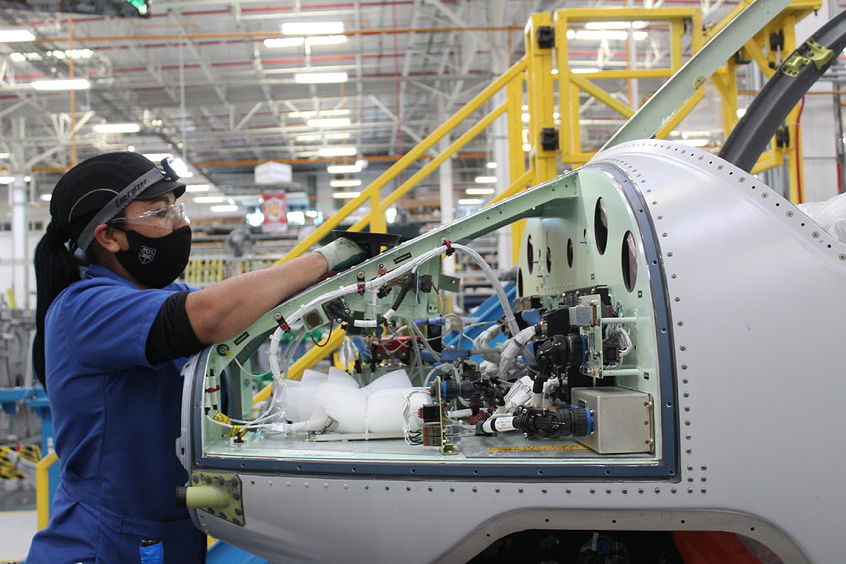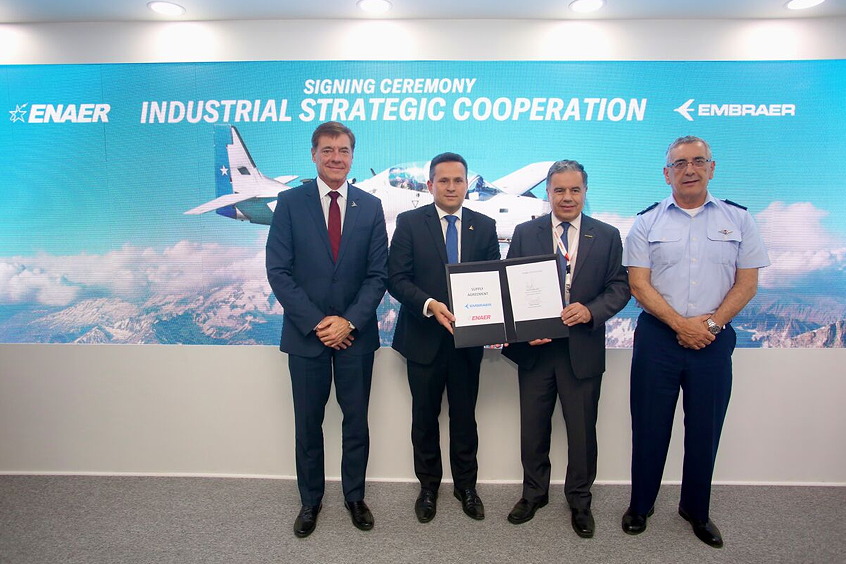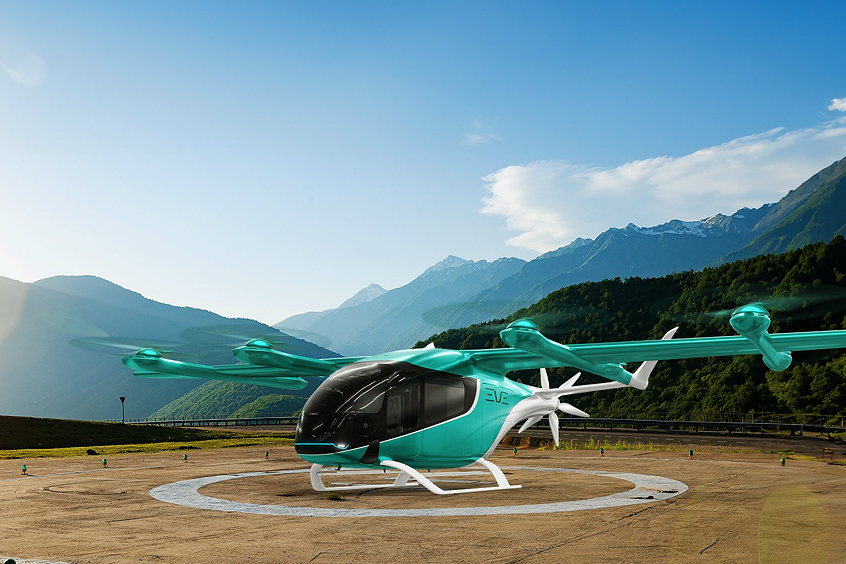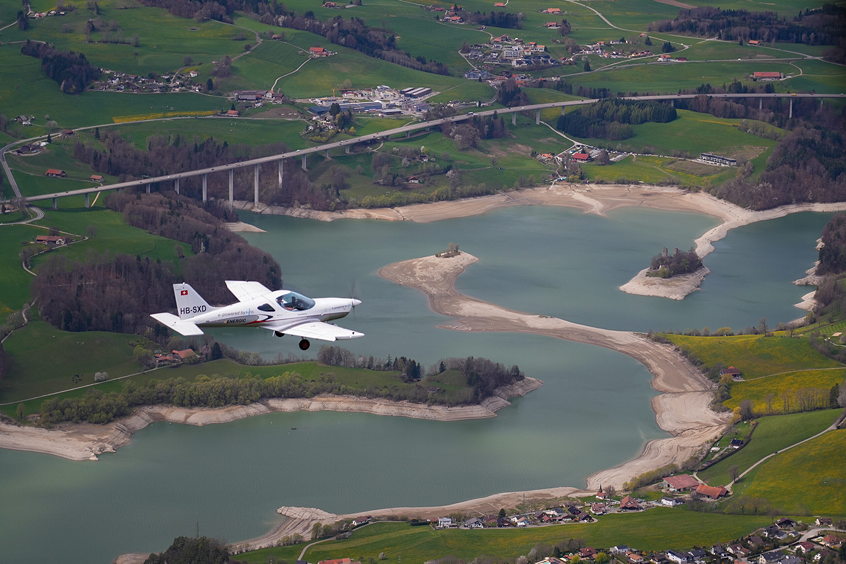Through rapid engine prototyping, GE Honda Aero Engines has built and tested eight HF120 engine cores and eight full turbofan engine configurations to prepare for formal certification testing later this year.
It represents one of the most aggressive test programs for a new jet engine prior to official FAA certification testing. "We're optimizing the engine configuration before certification testing," said Bill Dwyer, president of GE Honda Aero Engines. "The combined resources of the Honda and GE engineering teams working closely together make this possible."
To date, test results are highly encouraging. The HF120 engine has demonstrated more than 2,100 pounds of thrust while exceeding ambitious fuel efficiency and durability targets. Testing and rebuilds of full turbofan engines have been underway at Honda's Aircraft Engine R&D Center in Japan for about a year, verifying the engine design's operability, thermal characteristics and component efficiencies.
At the same time, hardware has been released for HF120 engines for the certification program. Testing continues throughout next year with FAA certification targeted for late 2009. Also next year, the engine undergoes flight tests on a flying testbed, as well as on the HondaJet.
The GE Honda HF120 engine was launched in 2006 on the HondaJet advanced light jet and Spectrum Aeronautical "Freedom" business jet, with service entry for both aircraft scheduled in 2010. By service entry, the HF120 is expected to have accumulated more than 15,000 hours of ground and flight testing.
HF120 engine production will begin in 2009 at GE's Lynn, Massachusetts, facility. Production then transitions to Honda Aero Inc.'s new engine production facility in Burlington, North Carolina, which is slated to open for engine deliveries in 2010.
The HF120 engine, rated at 2,095 pounds of thrust, succeeds Honda's original HF118 prototype engine, which has accumulated more than 4,000 hours of testing on the ground and in-flight. GE and Honda redesigned the engine for higher thrust, while seeking new standards of performance in terms of fuel efficiency, durability, and low noise and emissions.
The HF120 technologies include:
*Fan: A wide chord, compound-swept front fan and two-stage booster. The front fan and booster are GE Honda blisk designs with the latest 3D aerodynamic design, the same technology used to design GE's GEnx engines and Honda's Formula One experience for lower weight and efficiency. The outlet guide vanes are composite for weight reduction.
*Compressor: Features a high temperature, titanium impellor developed by Honda over the past 20 years for maximum engine pressure ratio and stall-free performance.
*Combustor: Based on the Honda HF118-design, it features compact reverse-flow configuration and single-stage air-blast fuel nozzles. The liner is made of advanced material with laser-drilled, multi-hole cooling.
*Turbine: For durability, advanced materials are being used, including state-of-the-art single-crystal high-pressure (HP) turbine blade materials. The low-pressure turbine (LP) is a two-stage configuration. A counter-rotating HP and LP spool shaft system provides further reduction in weight.
A key cost-of-ownership feature of the HF120 will be the ability to operate in service for an industry best-in-class 5,000 hours before the first major overhaul with no need to open the engine for interim hot-section inspections. Keys to this capability are the advanced airfoil materials and coatings that GE and Honda are maturing for the engine's high-pressure turbine section.
The emergence of light, low-cost business jets creates considerable opportunity for highly reliable and durable jet engines. The GE Honda HF120 durability will be ideally suited for high-utilization aircraft, such as the emerging air taxi segment. Lightweight and efficient design enables the performance, range and comfort required of the business jet customer.
In 2004, GE and Honda formed its 50/50 joint company, based in Cincinnati, Ohio, near the GE Aviation headquarters. The joint company integrates the resources of GE and Honda Aero, Inc. in Reston, Virginia, a Honda subsidiary established to manage its aviation engine business.
| Contact details from our directory: | |
| GE Honda Aero Engines | Turbofan Engines |
| Honda Aero, Inc. | |
| Related aircraft programs: |
| Honda HA-420 HondaJet |
| Related directory sectors: |
| Engines |
Weekly news by email:
See the latest Bulletin, and sign up free‑of‑charge for future editions.

Bell Mexico delivers 800th commercial aircraft cabin

Chile's ENAER expands cooperation with Embraer

Eve names KAI as supplier for eVTOL pylons
